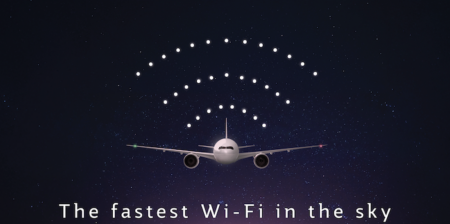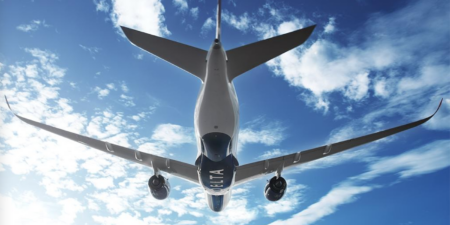Above: According to the team, the concept hybrid-electric aircraft (powered by a turbojet and energy-dense lithium air batteries) features a few design cues from concepts created by NASA, Boeing and Airbus
March 16, 2016 – The latest concept for environmentally friendly air travel has been conceived by the slightly unusual pairing of a student and an airport parking and hotels booking company. Adam Omar, a PhD student of aircraft design at Imperial College London, has collaborated with APH (Airport Parking & Hotels), to create a blended-wing body (BWB) design that they say is a vision of “a cleaner, greener tomorrow for commercial flight”.
Above: Premium ticket holders can enjoy a cocooned seat environment. Comfort and passenger experience have been considered ahead of cabin density
The cabin interior addresses some of the specific challenges of BWB aircraft and evolving passenger needs. For example, while the BWB shape is fuel efficient, it does not allow much scope for windows. Thus the cabin walls are clad in electronic screens, which can project anything the operator chooses, such as a projected live view taken from external cameras, in-flight information and entertainment, or even a relaxing scene of starry skies to help passengers get to sleep.
Above: While an external feed to sidewall displays is popular for concepts, passenger anxiety would have to be studied before implementing such an idea
Further entertainment options are provided by the wraparound visors, which can be folded down from the headrest area in front of the occupant’s face when needed. The curved OLED displays would immerse passengers in the IFE experience. Clearly the displays are not suitable for taxi, takeoff and landing, or in emergencies, so they are intended to fold away automatically in such instances.
Above: With the sidewalll displays and wraparound IFE displays, the concept would really involve passengers in a digital experience
What the BWB shape takes away in terms of windows, it pays back in terms of interior space, which Omar envisions being used to create more onboard destination and social spaces, such as lounges and snack bars. Alternatively, that space could also be used for passenger seating.
Above: The team predicts a move away from crew service for food and beverage, to a more sociable self-service concept
The concept uses Boeing’s much-talked about Microlattice concept, a strong and energy-absorbent aircraft metal that is incredibly lightweight as its structure is 99.99% air. The team envisions its use in seating, flooring and sidewall, or indeed any parts of the aircraft that contribute a lot of weight but are not aerodynamically or structurally essential (more about microlattice HERE).




